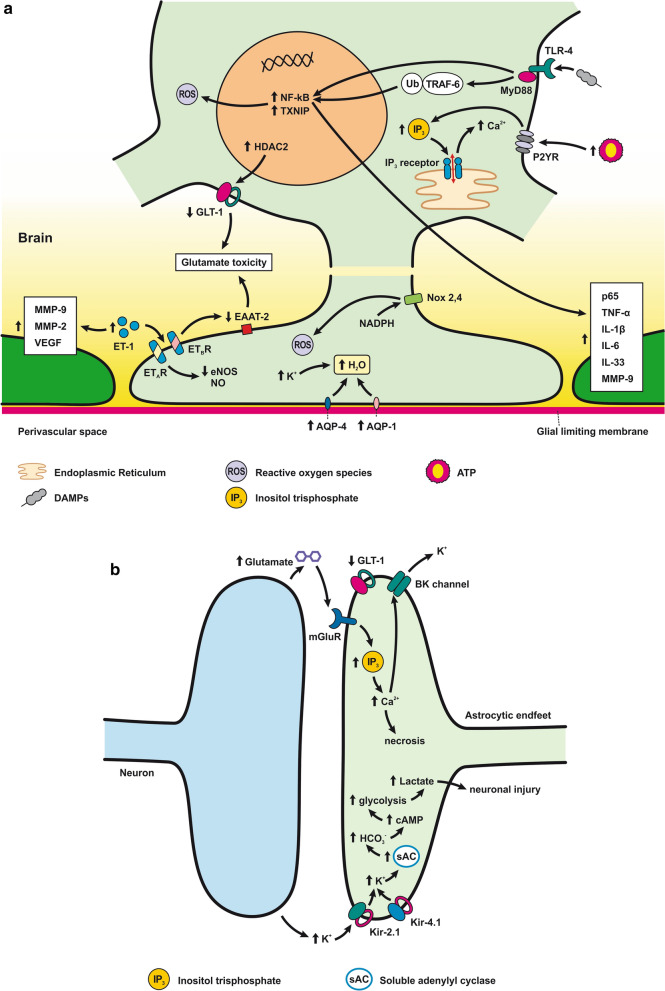Fig. 5.
Reaction of astrocytes to SAH. a Astrocyte-ECs interaction after SAH. Extracellular ATP activates P2Y receptors leading to IP3-dependent Ca2+ release and astrocyte necrosis. Activation of TLR4/MyD88 pathway leads to TRAF6 ubiquitylation and NF-κB upregulation, promoting ROS production. TXNIP can also promote cell death by inducing ROS production. ROS is increased by upregulated NOX as well. Glutamate toxicity results from GLT-1 dysfunction due to upregulated HDAC2. ET-1 released by ECs activates ETB receptors, which downregulate the EAAT-2 transporter, causing glutamate toxicity. ET-1 activates ATA receptors and causes K+ channel dysfunction by decreasing eNOS and NO production. Another effect of ET-1 is to upregulate MMP-2, MMP-9, and VEGF, thus altering BBB permeability. Brain edema is caused by water accumulating inside the astrocyte. Accumulation of K+ and upregulated AQP-4 and -1 are mainly responsible for water accumulation, leading to cell swelling and apoptosis. b Astrocyte-neuron interaction after SAH. Neuronal activity following SAH increases the K+ level in the synaptic cleft. The released K+ activates Kir2.1 and Kir4.1 channels that then import K+ into the astrocytes. K+ increases VSMC contraction and cell swelling. sAC in astrocytes is activated by increased extracellular K+ and mediates HCO3− entry into astrocytes. Increased HCO3− levels trigger the cAMP cascade causing initiation of glycolysis and lactate formation, leading to neuronal injury. Inhibition of GLT-1 leads to glutamate toxicity. mGluR activation in astrocytes stimulated by neuronal activity leads to IP3 activation and elevated Ca2+ levels in the astrocyte and K+ efflux via BK channels. Increased levels of Ca2+ could lead to cell necrosis. Increased concentration of K+ and glutamate causes spreading depolarization

